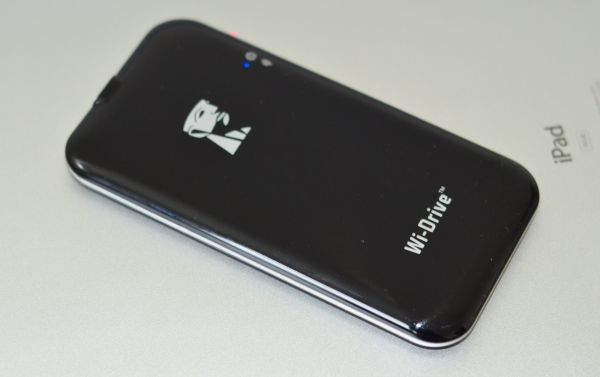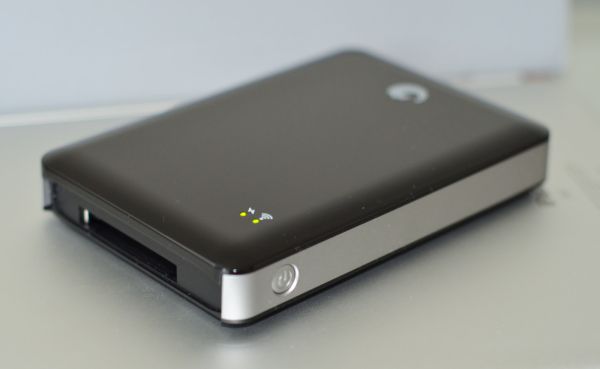Understanding Wireless Storage: Kingston Wi-Drive and Seagate GoFlex Satellite
by Vivek Gowri on November 21, 2011 2:30 PM ESTConclusion
Let’s start with the devices themselves. I’m a huge fan of Kingston’s Wi-Drive design—it’s sleek, elegant, and has everything you’d want in a simple wireless flash drive for iOS devices. But at the same time, it’s impossible to discount the fact that the GoFlex Satellite is a significantly more versatile device, given its capability to stream to different platforms and anything with a web browser. Plus, you get roughly fifteen times more storage capacity compared to the largest Wi-Drive Kingston has on offer.
The GoFlex Satellite, in my mind, is the ultimate roadtrip companion. You get 500GB worth of movie storage space, there’s no issues with the wireless connections (either being barred from using wireless radios on an airplane or having an internet connection that you can’t use), and it conveniently comes with a compact car charger in the box. If you’re going to be driving more than 1000 miles anytime soon, you will definitely appreciate having one of these on hand. However, I suspect that the 1000+ mile roadtrip with an iPad market is pretty limited.
The GoFlex Satellite makes more sense to me as a portable media solution than the Wi-Drive, because you can fit a decent chunk of even a very large media library onto a 500GB drive, whereas the Wi-Drive is more of a companion piece to carry a few documents, pictures, and movies. Even by that standard though, the Satellite is on the pricey side—you can find standard 500GB GoFlex portable drives for sub-$70, putting them at roughly 40% the price of the Satellite. Is the convenience of wireless file access worth paying nearly three times as much? Not for most people, but if you’re in the niche that needs it, the Satellite is a solid choice.
Honestly, I liked the Wi-Drive better. It’s a sleek, well designed, well integrated piece of technology that I greatly enjoyed using. It’s better looking, more portable, and more usable than the Seagate. The option to still connect to the internet, slower as it might be due to the increased network latency, is a rather useful feature that you don’t get with the Satellite (though the need to disable security in the present firmware to get this working needs to be addressed). The Wi-Drive launched at $179 for the 32GB and $129 for the 16GB, prices that happen to fall slightly above Apple’s pricing hierarchy. Apple asks for $100 to go from 16GB to 32GB, and $200 to go from 16GB to 64GB, so on the one hand it's a reasonable idea to survive with a limited amount of storage and put the money towards a higher capacity future-generation iDevice. On the other hand, having built-in storage with faster access and better battery life without the need to carry an extra device isn't without merit.

With the new street prices of $79 and $99 for the 16GB and 32GB models, respectively, it’s a much easier sell, especially for the 32GB model. The value question is simple—you’re undercutting Apple’s own steps between storage capacity rather significantly, so it’s not a senseless financial proposition. As such, it’s not a bad idea to pick up a Wi-Drive as a cool way to expand storage on your mobile device and wow your friends in the process, but going through a separate wireless network and having a wireless passthrough to get internet is a hassle, one that needs to be fixed in future generations.
It’s always difficult to provide a clear conclusion on devices in a completely new category, for a multitude of reasons. Early devices tend to be expensive and functionally limited, but the underlying concept has the potential to go much farther. That basically sums up my feelings for wireless storage at this point: I don’t personally see either of the two devices here as game changers; the Wi-Drive is an interesting toy to pick up given the price drop, but that’s about it.
With that said, I think wireless storage is going to play a big role in the move to cloud-based applications and data, moving storage away from devices and turning them into thin-clients for cloud services. Portable wireless storage is one component for when you have local content to access. It adds another dimension of versatility and portability to the data you store, and it has the potential to become the wireless replacement for flash drives and the like. However, the current solutions, including the Kingston and Seagate we looked at, give up too much of the convenience factor to be worth the hassle unless you really, really need to extend the storage of your mobile device right now.











32 Comments
View All Comments
inplainview - Monday, November 21, 2011 - link
Good point but again, who is forcing you to by anything Apple? Don't like their products then don't buy them. The problem that you have is mistaking your desires and needs as that of others. Many, many people have shown that they are more than content with the current memory levels that come in iPhones. Second, not everyone that buys an iPhone or iProduct for that matter is at geek level 20. These are average people with average needs. If you haven't figured out Apple strategy by now, then there is really no hope for you in the future.medi01 - Friday, November 25, 2011 - link
"Others" are buying wireless media, to compansate for lack of normal slots on device.Want to talk about "the needs" again?
inplainview - Monday, November 21, 2011 - link
@Impulses andJohnmci7,Are you still complaining about the lack of mini SD slots on an iPhone after all these years? Really? Have you been asleep or under a rock? Apple is NEVER, and don't like to use never, but I can with confidence here, gonna add an external slot to their devices. This is how it is and how it has been and will continue. Android is always there for your money if you're not happy.
Now in regards to these two products. I own them both and have to admit that the Kingston is the easier of the two to use. There is a Mac OS X problem that will eventually prevent the WD from mounting. Included in the WD box is Paragon's NTFS's software to help you mount the drive, but the driver and Mac OS X have issues. Eventually something gets hosed up and she's no work no more. For Mac users, if you format the drive to HFS+, you will more likely lose the wifi function of the drive as well. While this might be a great drive for Windows users, it is something in my opinion that Mac users should avoid.
Johnmcl7 - Monday, November 21, 2011 - link
No, wasn't complaining - guess this is a sore point for you. My point was simply that these wifi products are clearly more useful for the Apple devices which lack expansion as opposed to the Android devices which do, both internally and externally - the article seems to miss this completely.John
inplainview - Tuesday, November 22, 2011 - link
Not a sore spot just that I see the difference between this being a geek site, catering to uber-power users verses the normal users who could not care less. People want phones that work, not phones that are tweaked, fiddled with. Other than some of the super-uber-OTT-geeks here, who really has the time or desire to think about if their device has SD slots, or this or that processor or graphics unit. What I like about this site is that it does not appeal to the average user, meaning that when you come here, you know what you're getting. This is what makes this site better than Macrumors.hmurchison - Tuesday, November 22, 2011 - link
These products exist to share content. A simple Camera Connection kit for $29 allows me to easily add up to 32GB of storage. These devices are more defined by the sharing software that lets them serve data to other devices.inplainview - Monday, November 21, 2011 - link
Great article by the way Vivek.This weekend I will try to do a TimeMachine rollback on my MBP to the point before the Paragon drive pooped the bed and see if I can get thing get things peachy again. The combination of having to use a 3rd party driver just to get the thing to show up is a deal breaker for me.
ojingoh - Monday, November 21, 2011 - link
http://store.apple.com/us/product/MC531ZM/A?fnode=...MadMan007 - Monday, November 21, 2011 - link
Something like the Kingston device but with an SDXC slot and no built-in memory, and that works with things other than iStuff.Cari - Tuesday, November 22, 2011 - link
.. but can you even use a wireless device while in-flight? (not to troll or anything but just laying it out there)